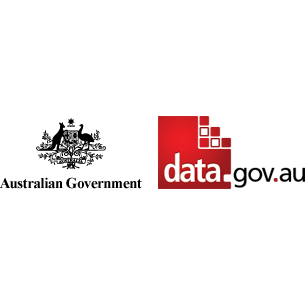Brief description
## **Abstract**This dataset was supplied to the Bioregional Assessment Programme by a third party and is presented here as originally supplied. The metadata was not provided by the data supplier and has been compiled by the programme based on known details.
Microsoft Excel workbooks containing bore groundwater levels and stream flow from selected Gippsland streams to illustrate GW-SW interactions. Hydrographs showing the GW levels and stream flow have been generated from these data. These charts illustrate the connectivity between GW and SW situations.
Time range - 01/01/1970 to 30/06/2014
Figure 37 - Groundwater hydrographs of three nested bores located in Macalister Irrigation District west of Sale plotted against daily stream water level of Latrobe River at Rosedale (gauge station no. 226228)
Figure 38 - Groundwater hydrographs of a transect of bores located near Mitchell River west of Bairnsdale plotted against daily stream water level of Mitchell River at Rose (gauge station no. 224203)
Figure 39 - Groundwater hydrographs of two nested bores located near Snowy River west of Orbost plotted against daily stream water level of Snowy River at Jarrahmond (gauge station no. 222200)
Figure 40 - Groundwater hydrographs of three nested bores located in the Macalister Irrigation District north of Sale plotted against daily stream water level of Avon River at Stratford (gauge station no. 225201)
## **Purpose**
Produced from time-series stream flow and groundwater water level data downloaded from the Water Measurement Information System (http://data.water.vic.gov.au/monitoring.htm)
Monitoring stream flow and stream level in Latrobe River at Rosedale (gauge station no. 226228) and groundwater level in the alluviual aquifers near the river.
Monitoring stream flow and stream level in Mitchell River at Rose (gauge station no. 224203) and groundwater level in the alluviual aquifers near the river.
Monitoring stream flow and stream level in Snowy River at Jarrahmond (gauge station no. 222200) and groundwater level in the alluviual aquifers near the river.
Monitoring stream flow and stream level in Avon River at Stratford (gauge station no. 225201) and groundwater level in the alluviual aquifers near the river.
## **Dataset History**
This narrative is taken from the associated draft report.
Groundwater generally interacts with surface water through various processes and pathways. The development of groundwater often has impacts on major streams (and vice versa). As such it is necessary to manage groundwater and surface water resources in combination. This requires an understanding of the interconnectivity and processes underpinning surface water and groundwater interactions. To better inform the numerical groundwater model developed for the Gippsland region, a brief assessment of surface-groundwater water interaction across the study area was undertaken, based on available literature (e.g. DSE 2012, SKM 2012a, 2012b; Hofmann, 2011) and analysis of groundwater and surface water information. DSE (2012) collated a state wide dataset of groundwater and surface water interaction from numerous investigations across Victoria. The dataset described groundwater and surface water interaction in four broad classes: neutral/losing, gaining, variable and unclassified. SKM (2012a) undertook baseflow separation analysis for 180 stream gauges on unregulated rivers in Victoria. This included 51 gauges in the Gippsland region. The baseflow separation analysis was undertaken on historical river flow records up to 2012 and utilised a filter parameter of 0.98. The results of the analysis for the 51 stream gauges in the Gippsland region is summarised elsewhere.
## **Dataset Citation**
Victorian Department of Economic Development, Jobs, Transport and Resources (2015) Groundwater hydrograph and stream flow data - Gippsland. Bioregional Assessment Source Dataset. Viewed 05 October 2018, http://data.bioregionalassessments.gov.au/dataset/150c5a33-9dd2-46f7-9efd-08bd15f52ba1.
Full description
Groundwater hydrograph and stream flow data - Gippsland - Data FileSpatial Coverage And Location
text: POLYGON ((0 0, 0 0, 0 0, 0 0))
Subjects
User Contributed Tags
Login to tag this record with meaningful keywords to make it easier to discover
Identifiers
- Local : 150c5a33-9dd2-46f7-9efd-08bd15f52ba1
- URI : data.gov.au/data/dataset/f6c7d260-d043-465b-b7f9-c732db3fbc0c



